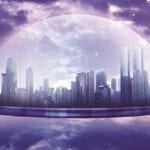 Politics
Politics  Politics
Politics  Weird Stuff
Weird Stuff Ten Bizarre Facts About The Doge Meme
 Our World
Our World 10 Ways Your Christmas Tree Is More Lit Than You Think
 Movies and TV
Movies and TV The 10 Coolest Stars to Set Sail on The Love Boat
 History
History 10 Things You Didn’t Know About the American National Anthem
 Technology
Technology Top 10 Everyday Tech Buzzwords That Hide a Darker Past
 Humans
Humans 10 Everyday Human Behaviors That Are Actually Survival Instincts
 Animals
Animals 10 Animals That Humiliated and Harmed Historical Leaders
 History
History 10 Most Influential Protests in Modern History
 Creepy
Creepy 10 More Representations of Death from Myth, Legend, and Folktale
 Politics
Politics 10 Political Scandals That Sent Crowds Into the Streets
 Weird Stuff
Weird Stuff Ten Bizarre Facts About The Doge Meme
 Our World
Our World 10 Ways Your Christmas Tree Is More Lit Than You Think
Who's Behind Listverse?

Jamie Frater
Head Editor
Jamie founded Listverse due to an insatiable desire to share fascinating, obscure, and bizarre facts. He has been a guest speaker on numerous national radio and television stations and is a five time published author.
More About Us Movies and TV
Movies and TV The 10 Coolest Stars to Set Sail on The Love Boat
 History
History 10 Things You Didn’t Know About the American National Anthem
 Technology
Technology Top 10 Everyday Tech Buzzwords That Hide a Darker Past
 Humans
Humans 10 Everyday Human Behaviors That Are Actually Survival Instincts
 Animals
Animals 10 Animals That Humiliated and Harmed Historical Leaders
 History
History 10 Most Influential Protests in Modern History
 Creepy
Creepy 10 More Representations of Death from Myth, Legend, and Folktale
Top 10 Countries Held Back By Their Geography
We know that the geography of a country has a huge role to play in its social and economic progress. Quite a few regions around the world have always been relatively better-off than others due to the inherent advantages afforded by their starting position on the map—like arable land and natural borders. It’s not really difficult to prove, either; just look at Switzerland.
What most people don’t realize, though, is that the converse is true, too. Geography plays an equally important role in holding a region back, though that’s usually attributed to bad politics or cultural differences. While those factors may play a prominent role, too, they’re not enough to explain how so many countries around the world are still dealing with the same logistical and economic problems they’ve always had. It all makes sense, however, as soon as you take a good look at their map.
Top 10 Iconic Places Pictured From Behind
10 Russia

Russia has so many problems with its geography that we don’t even know where to start. The most obvious one is its absolutely humongous size. While on one hand, it makes the country almost impossible to invade, on the other, it makes transportation and trade a nightmare. That’s the reason Russia was one of the last European powers to be fully industrialized..
Another problem is Russia’s connection to the oceans. Because of being located in what is mostly a frozen wasteland, most of Russia’s important ports are frozen for several months in a year. Its largest port in the Pacific—Vladivostok—is trapped by the Sea of Japan, which is almost-entirely controlled by Japan. This means that Russia has no major port that’s functional for trade throughout the year, which is why it has never been able to expand its naval influence beyond its immediate borders.[1]
9 Australia

Australia is—by all measures—a prosperous and developed nation, though that’s despite its geographical features, not because of them. It’s much more obvious if you look at its population-density map, though just the general map would do, too. Australia is perhaps the only nation that is almost entirely uninhabited, as most of its population lives in moderately-populated urban centres of south and south-east Australia. Other than that, the country is full of absolutely inhospitable places in a variety of terrains—from dry desert to tropical forests.
The vast majority of it is arid, which creates a number of problems for its government. Most pressingly, the entire region is quickly running out of water, as many places are currently facing a drought. Moreover, even the urban centres like Sydney and Melbourne are now receiving fewer rains than usual, which is saying something in what is already the world’s driest continent.[2]
8 Indonesia

Indonesia’s geography is unlike any other country, and that’s not an exxageration. By definition, it’s an archipelago, though that barely begins to explain what it really is. Indonesia is—by far—the largest archipelago nation in the world, made up of over 18,000 scattered islands of vastly varying sizes. While some are barely a few miles across in size, the largest ones are comparable to islands like New Guinea and Borneo.
The vast distance between Indonesia’s islands has proved to be a major challenge for the country’s progress. Throughout its history, Indonesian kingdoms have had to wait for the development of maritime technologies to do the same thing as their counterparts in—say—Europe or Asia. It also poses a challenge of identity, as it’s still almost impossible to unite the various people and cultures found across its territory into one single national identity. Its islands are also why a great naval power like Britain was easily able to colonize the country.
Additionally, Indonesia’s proximity to the Pacific Ring of fire makes the country particularly prone to natural disasters. It’s home to 136 volcanoes, out of which 61 have erupted since 1900. The tectonic activity in the region is so high that the country experiences an earthquake of magnitude 5.0 or lower almost every day![3][4]
7 Egypt

Most people would say that Egypt’s geography has actually been its biggest lifeline, and they’d be correct. One of the cradles of civilization, the fertile plains of the Nile delta have provided Egypt with an inherent advantage over other countries.
All of that, however, is in the past, or more specifically, before the construction of the Suez Canal. Built in 1868, the canal is an artificial sea corridor linking the Meditarraenan and Red seas, as before that, European trade ships had to go all the way around the entire African continent to get to Asia. It was definitely good for business, but not that great for political stability in Egypt.
Since its construction, the country has been at the centre of quite a few major conflicts directly related to its control of the canal; from the Suez Crisis of 1956 to the Arab-Israel War of 1967. Even today, unfettered access to the canal is a major political issue in the region.[5]
6 Pakistan

While it’s a bit unfair to say that Pakistan has always had a geography problem—as the country only came into existence a bit over seventy years ago—it definitely does now. You don’t even need to put in extensive research to know why; just take a look at its map.
Almost all of Pakistan’s cities are located near the border, and if that doesn’t sound that bad, consider that Pakistan has been at an informal state of war with its neighbor India since its inception in 1947. Moreover, the entire Pakistan-India border—save for the northern, mountainous part—is little more than plain, open ground, which is almost impossible to defend in case of a full-scale invasion. It’s not a hypothetical case, either, as India has actually been able to make its way to within striking distance of Pakistan’s largest city—Lahore—in their 1965 war.[6]
10 Of The World’s Last Unexplored Places
5 The Netherlands

The Netherlands is one of a small number of European nations to set up a vast colonial empire, even if it was short-lived. It’s in stark contrast to most entries on this list, too, as it’s a developed and prosperous nation in all aspects. Again, though, that’s only because it has been so good at overcoming its geographical challenges.
Simply put, the Netherlands is a bit…low. Almost one-third of the entire country lies below sea level, which has proven to be a rather expensive problem to solve throughout the its history. The entire country is full of structures—like artificial sand dunes, artificially flooded marshes and pumps—meant to keep the water out. As you can guess, it takes a huge part of the government’s budget, a problem that’s would get worse if sea levels were to rise.[7]
4 China

If you study China’s history, you’d notice a pattern. It’s absolutely full of internal strife and conflict, which may just be the reason that it never had time for wars going on outside (until those wars came to China, of course). The largest rebellion in history—the Taiping Rebellion—happened in China, along with quite a few other major civil wars.
Of course, China has always been one of the largest empires around, as well as one of the most densely-populated. Its geography also doesn’t help, as China is topographically divided into fertile lowlands surrounded by dry and sparsely-populated highlands. The lowlands are where most of the Han Chinese have traditionally lived, though the highlands have always been difficult to control. They acted as a buffer between China and invading tribes—especially from the north—and keeping them together has always been crucial to stability in China. Moreover, its vast territory is also home to a wide variety of cultures and ethnicities, each with their own opposing interests and cultures. And needless to say, the evils of communism don’t help.[8]
3 Uzbekistan

As most people could guess, being landlocked creates huge problems in terms of trade, economic development and political stability. Landlocked nations have to spend a huge amount of money and political influence to get access to a port, as trading via land is ridiculously expensive and time consuming. Even then, they’re always dependent on the stability of their neighbors for trade, further diminishing their future prospects.
What’s worse is being landlocked by two countries instead of one, even if there are only two countries on that list; Uzbekistan and Liechtenstein. While the latter is surrounded by politically-stable and prosperous nations, Uzbekistan hasn’t been so lucky.
Formed in the wake of the dissolution of the Soviet Empire in 1991, Uzbekistan has to spend much more than even other landlocked countries to trade, something that has affected its economic prospects since its inception. Moreover, it’s surrounded by highly politically-unstable countries, some of which are landlocked themselves.[9]
2 Japan

Japan has so many problems with its geography that it’s hard to focus on just one. Most famously, it lies along the Pacific Ring of Fire; a horseshoe-shaped chain of islands and volcanoes in the Pacific that’s also the most tectonically-active region in the world. That’s why earthquakes are so common across the country, to the extent that earthquake-proofing is a legal requirement for buildings in most cities.
Moreover, the country is almost-entirely made up of hills and mountains, restricting the arable area to just about 20% of the total landmass. That doesn’t just raise the costs of importing food from abroad, it also restricts the number of people that can earn a living working in the farming industry; one of the largest employers in most developed economies. On top of that, Japan is also low on minerals and other natural resources, further raising the cost of its imports.[10]
1 The Entire African Continent
While it’s true that Africa isn’t just one country—and is, in fact, made up of many diverse regions and cultures with their own distinct identities—the entire continent suffers from the same geographical problem. Africa is, to put it simply, too long. Compared to the horizontal stretch of Eurasia—which allows domesticated crops and technologies to travel to far off places with similar conditions—Africa’s vertical make-up has always hindered its technological and developmental progress.
While that’s obviously not the only reason behind all of Africa’s problems, it’s definitely the least discussed. Because of being spread out vertically instead of horizontally, African cultures have only evolved on the east-west axis, which means that new technologies and other developments have taken longer to spread across the entire continent. To a large extent, that was the case with much of the Americas, too, though the effects there are nowhere near as pronounced as in Africa.
10 Ancient Wonders As You Have Never Seen Them








